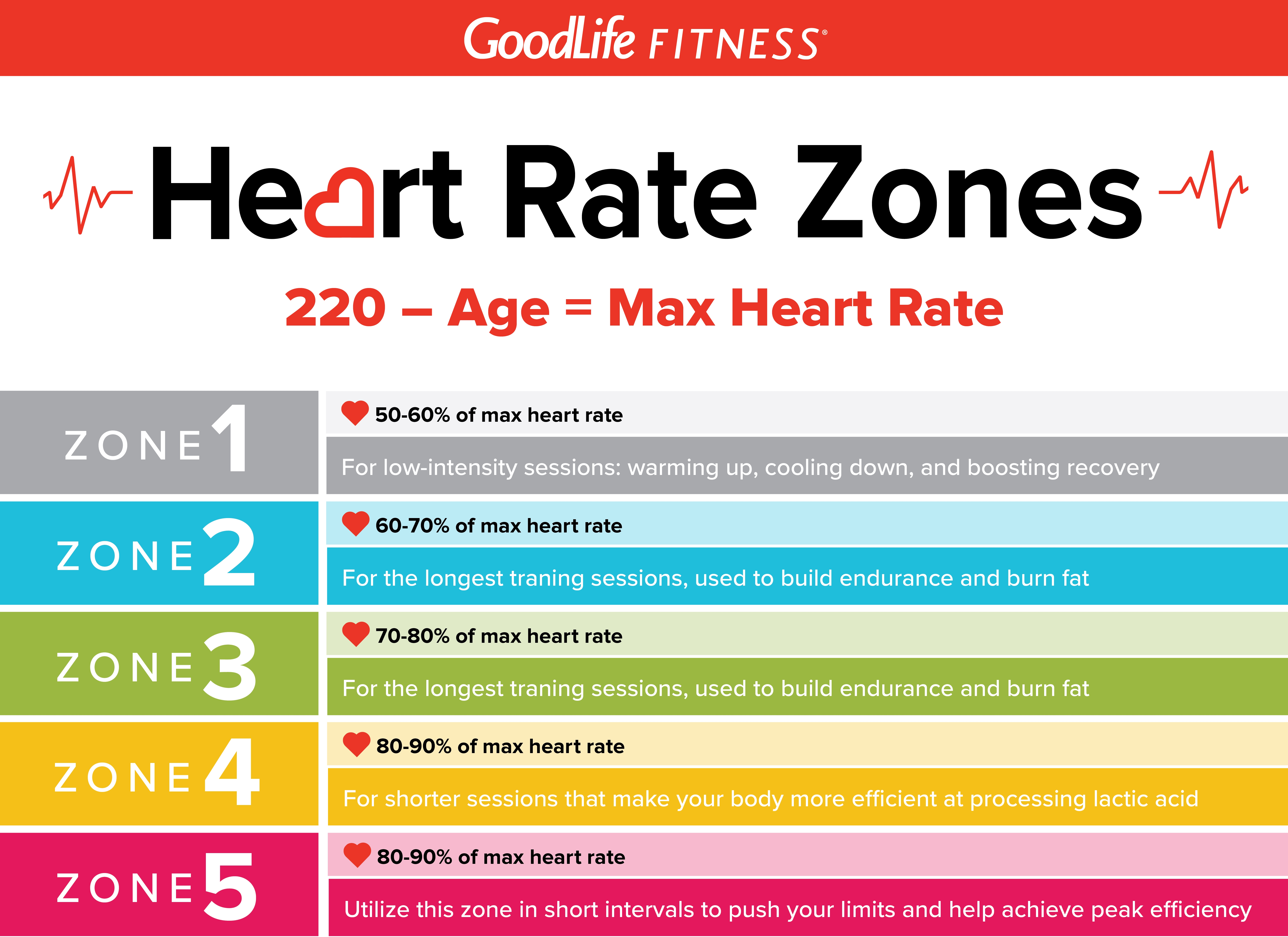Monitoring your heart rate (HR) can tell you a lot about your body and your approach to fitness. From resting and recovery to pushing your limits, properly monitoring your pulse with heart rate zones will help you train more effectively.
Heart rate zones break training intensity down into five levels, from 50-100 percent of your maximum heart rate. Each zone provides its own benefits, meaning that you can target your specific goals by training within the desired zone.
To get started, all you need is your maximum heart rate. To estimate this number, simply subtract your age from 220. For example, a 40-year-old person’s maximum heart rate should be about 180 beats per minute.

Zone One (50-60 percent of max HR)
The 'easy’ or ‘light’ zone is for longer low-intensity sessions. Best for getting the body moving, warming up, cooling down, or boosting recovery from other workouts
Zone Two (60-70 percent of max HR)
Sometimes known as the ‘aerobic’ zone, you should be able to maintain this HR for long periods of time, helping you to build endurance and burn fat.
Zone Three (70-80 percent of max HR)
At this moderately high intensity, your body will learn to improve blood flow efficiency through your muscles, improving your overall fitness. You can also use this zone to build speed and strength.
Zone Four (80-90 percent of max HR)
Shorter high-intensity training sessions will improve your speed endurance and improve your body's ability to process lactic acid build up, making overall recovery more efficient.
Zone Five (90-100 percent of max HR)
Here, your respiratory and circulatory systems will be at their limit. More experienced athletes and gym goers can incorporate interval training, with short bursts of Zone Five, to achieve peak efficiency in fueling and firing your muscles.
